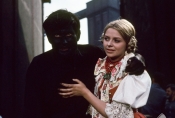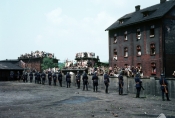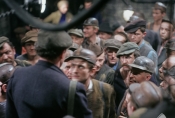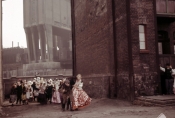THE PEARL IN THE CROWN [1971]
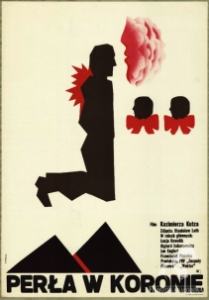
year:
- 1971
release date:
- 27 I 1972
runtime:
- 111 min
directed by:
- Kazimierz Kutz
written by:
- Kazimierz Kutz
director of photography:
- Stanisław Loth
cast:
- Łucja Kowolik [Wichta], Olgierd Łukaszewicz [Jaś], Jan Englert [Erwin Maliniok], Franciszek Pieczka [Hubert Siersza], Jerzy Cnota [August Mol], Bernard Krawczyk [Franciszek Bula], Tadeusz Madeja [Ochman], Henryk Maruszczyk [Alojz Grudniok], Marian Opania [Albert], Jerzy Siwy [Milenda], Wojciech Alaborski [major Suchanek]
edited by:
- Irena Choryńska
music by:
- Wojciech Kilar
production design:
- Bolesław Kamykowski
produced by:
- Zespół Filmowy „Wektor”
executive producer:
- Tadeusz Baljon
awards:
-
• Lubusz Film Summer Łagów 1972: Grand Prix Golden Grape, award for best male performance in a leading role for Franciszek Pieczka
• Don Quixote 1972
• IFF Milan (Italy) 1972: Golden Globe
• IFF Panama (Panama) 1972: Grand Prix, best director award for Kazimierz Kutz
• European Festival of Young Cinema Film Antwerp (Belgium) 1972: Mediorama Award
• IFF Blancenberge (Belgium) 1973: 1st prize
About the film
The second part of Kazimierz Kutz’s Silesian triptych (the other two are: Salt of the Black Earth and Beads of One Rosary). The distinctive style of photography, the characters and events lends the film the nature of a poetic ballad about miners on strike. It also shows the traditional customs of the Silesian people. The gloom of the mine is contrasted with the sunny world of colourful houses, folk clothes and sublime love − the only joy and treasure for these poor people.
The film takes place in Polish Silesia in the 1930s. Young miner, Jaś, returns home from his shift. Waiting for him is Wichta, his loving wife and his two small sons. The next day, Jaś learns that the mine is to be closed because of flooding. This has been decided by the German owner, Von Mischke. Hubert Siersza, a leftist, calls for a sit-in strike. The miners approve because they are afraid of losing their jobs. Jaś wants to return to his wife and children but he overcomes his fear and stays with his friends. Strike committee I is selected, headed by Siersza. The mine management try to deceive the strikers. They promise to negotiate with the leaders if they leave the mine. Siersza requests that the talks are conducted at the bottom of the mine. Meanwhile in the city, the miners’ families and old Silesians spontaneously support the strike. They are led by Erwin, a former Silesian insurgent fired from the mine for incitement to rebellion. A Silesian orchestra and women in regional costumes arrange parades and stand at the mine gates. Siersza decides to send Grudniok, a member of the strike committee, to Warsaw. Grudniok is to submit the miners’ demands to the government. Unfortunately, he returns with bad news. The capital has no interest in the matter. The mine is German property. Desperate participants of the strike decide to go on hunger strike. Some break down mentally; others are weakened from lack of food. Jaś misses his wife and still has her image before his eyes. The mine management is intransigent. A priest dedicates a solemn mass to the miners. It is interrupted by a brutal police raid. Finally, Siersza makes a desperate decision: he tells the management that the strikers will not leave the mine − even in the event of flooding. This move breaks the resistance of the authorities. Starost Wiśniewski decides to accept the conditions of the miners. The mine will continue to operate and no one will be punished for taking part in the strike. Utterly exhausted, Hubert Siersza signs an agreement. The weakened miners return to the surface. Their wives are waiting for them in front of the mine. One of them is Wichta, who lovingly takes Jaś home.
Joanna Piątek, Leksykon polskich filmów fabularnych, Warszawa 1996


